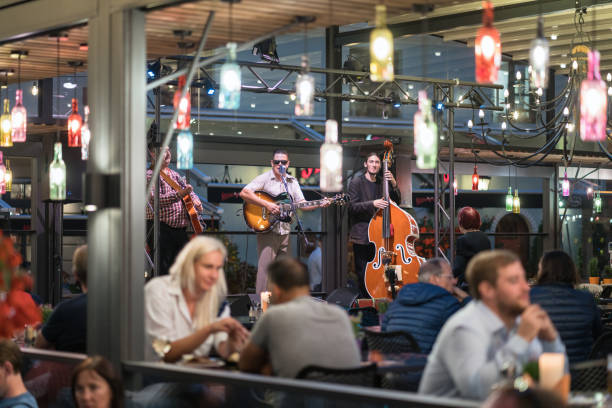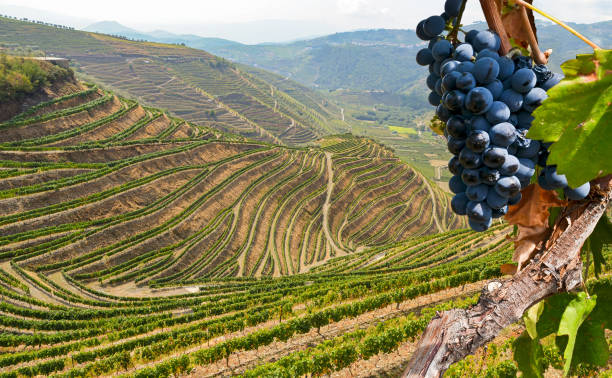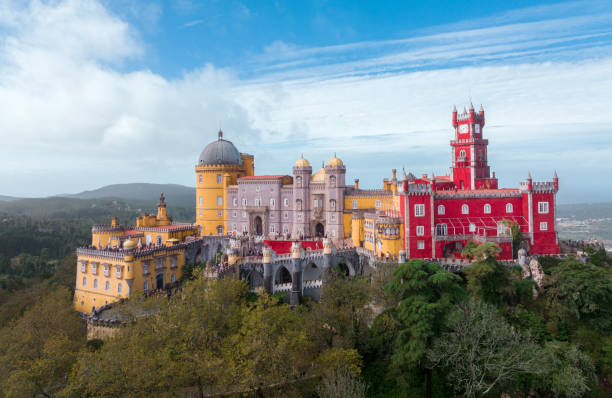Portugal is a hidden treasure of the Iberian Peninsula, offering a delightful blend of history, culture, and stunning landscapes. Whether you’re looking to soak up the sun on the Algarve’s golden beaches, wander through the lively streets of Lisbon. Enjoy wine tasting in the Douro Valley, picking the right time to visit is essential. The country boasts a varied climate with attractions and events throughout the year, making it a fantastic travel spot. Your ideal trip will depend on your interests, whether you crave adventure, relaxation, or cultural immersion. This guide will explore the seasons, detailing the weather, activities, crowd sizes, and budget tips.
The Ultimate Guide to a Dreamy and Thrilling Escape
1. Summer (June to August): The Best Time for Beaches & Festivals
If you’re dreaming of a lively Portugal filled with sunshine, and countless festivities, summer is the ideal season to visit. This is when tourism peaks, drawing sun-seekers and festival enthusiasts from all corners of the globe. With warm temperatures, extended daylight hours, and a wealth of outdoor activities, it’s the perfect time for an unforgettable adventure.

Warm Weather and Perfect Beach Days
You can expect sunny days with temperatures ranging from 78°F to 90°F (25°C to 32°C). The ocean reaches its warmest, making it perfect for swimming, especially in the Algarve region. Cities like Lisbon and Porto stay warm, but cool evening breezes provide a refreshing break from the daytime heat.

Top Beaches and Coastal Adventures
Visit Praia do Camilo, where golden sands meet stunning limestone cliffs. Explore secluded beaches like Costa da Caparica or embark on dramatic boat tours along the coastline.
Festivals and Cultural Celebrations
Festival enthusiasts can partake in the vibrant Festas de Santo António in Lisbon, where the night sky glows with lanterns, and the streets come alive with dancing, grilled sardines, and endless celebrations. In Porto, the São João festival offers a magical experience where revelers playfully hit each other with plastic hammers, party until dawn, and release lanterns into the night sky. Music lovers can also find plenty to enjoy.

Plan Ahead for a Smooth Summer Trip
Keep in mind that due to high demand, accommodation and flights can be 30-50% pricier in popular spots. Many hotels and major attractions fill up months in advance, so booking ahead is crucial to secure the best options.
2. Fall (September to November): A Perfect Balance of Weather & Culture
Fall is one of the best times to visit Portugal, offering a mix of mild weather, fewer crowds, and rich cultural experiences. This season is ideal for a relaxed, immersive trip, allowing you to enjoy warm days and cool evenings.
Mild Weather and Comfortable Travel
In the Algarve, September temperatures range from 75°F to 85°F (24°C to 29°C), while October cools down to between 65°F and 75°F (18°C to 24°C). In the north, November can be unpredictable, with temperatures dropping to 55°F to 70°F (13°C to 21°C) and occasional rain showers. Bringing a light rain jacket is wise for your explorations.

The Magic of the Wine Harvest Season
This time of year also marks the Wine Harvest in the Douro Valley, known as the Vindima Season. Visitors can tour vineyards in Porto, participate in traditional grape picking, and even try their hand at stomping grapes. The rolling hills are adorned with beautiful autumn colors, making it a perfect opportunity for outdoor activities like hiking in Sintra-Cascais Natural Park.

Cultural Landmarks and Festivals
Lisbon and Porto boast renowned cultural landmarks such as Belém Tower, Jerónimos Monastery, and Ribeira Square. Food festivals and wine tastings are plentiful throughout the fall.
A Budget-Friendly Travel Season
Accommodation and flights become more budget-friendly starting in mid-September, making it an excellent time to visit before the winter rains set in.

3. Winter (December to February): Ideal for Budget Travelers & Surfing Fans
Traveling to Portugal in winter provides a unique experience, especially for those seeking budget-friendly options. The low season brings fewer tourists, allowing for a more tranquil and authentic interaction with local life, culture, and traditions. With reduced prices on accommodations, flights, and dining, this is the prime time for great deals and savings. Cities like Lisbon, Porto, and the Algarve maintain a vibrant atmosphere without the usual crowds. In the Douro Valley and Serra da Estrela, you can explore a more laid-back and picturesque side of Portugal.

Portugal’s Winter Weather: What to Expect
The weather varies throughout the country. In the north, including Porto and the Douro Valley, expect cooler temperatures ranging from 40°F to 55°F (5°C to 13°C) with occasional rain. The southern regions, particularly Lisbon and the Algarve, enjoy milder weather, with temperatures between 50°F and 65°F (10°C to 18°C). If you’re hoping for snow, the Serra da Estrela Mountains are the only area in Portugal where skiing is possible. Despite some cloudy and rainy days, there are still plenty of sunny moments perfect for exploring the cities.

Nazaré: A Paradise for Surfers
For adventure seekers, Nazaré is the go-to spot, drawing professional surfers and enthusiasts with its record-breaking waves. The big wave season here is renowned, with the Atlantic coast offering thrilling experiences and stunning views of the ocean, cliffs, and turbulent shores. Whether you’re a seasoned surfer or just starting out, there are surf schools, wetsuits, and instructors ready to help. Even if surfing isn’t your thing, the competitions, events, and the sheer force of the waves create a mesmerizing spectacle.

Festive Winter Charm in Lisbon and Porto
Winter festivities in Lisbon and Porto come alive with holiday markets, twinkling lights, and celebrations like Dia de Reis (Three Kings’ Day) on January 6. Indoor activities such as visiting museums, galleries, churches, and historic sites like Belém Tower and Jerónimos Monastery provide cultural enrichment. Cozy cafés and restaurants add to the charm.

4. Spring (March to May): The Ideal Time for Outdoor Adventures & Festivals
Spring is one of the best times to visit Portugal, offering a delightful combination of pleasant weather and fewer tourists. The blooming landscapes make this season truly special, particularly in the Alentejo region and Douro Valley, where wildflowers transform the countryside into a canvas of vibrant colors.
Mild Temperatures and Blooming Landscapes
The cool temperatures in March, ranging from 55°F to 65°F (13°C to 18°C), gradually warm up, reaching around 75°F (24°C) by May.

Perfect for Outdoor Adventures
For outdoor enthusiasts, this is the perfect season for hiking along the Rota Vicentina, which highlights Portugal’s rugged coastline. Cycling in the Algarve is also a pleasure without the sweltering summer heat.
Cultural and Religious Festivities
Additionally, Spring brings a variety of religious and cultural festivals, such as Holy Week and Easter, where you can experience traditional processions in cities like Braga and Évora.

A Few Rainy Days, but Endless Charm
However, travelers should be ready for the occasional Spring shower, especially in March, when rainy days are more common in the north. Despite this, the fresh air, lively celebrations, and stunning landscapes make Spring an unforgettable time to explore Portugal.

5. When NOT to Visit Portugal?
While Portugal is a stunning destination throughout the year, there are certain months that may not be the best for your travel plans. If you prefer to avoid excessive heat, large crowds, or high expenses, it’s crucial to choose your timing wisely.
August: Overcrowded and Expensive
August tends to be one of the busiest months, with throngs of tourists descending on beaches and cities. The soaring temperatures can be quite uncomfortable, particularly in areas like Porto and the Douro Valley, where sightseeing under the blazing sun can be tiring. Moreover, flights and accommodations often skyrocket in price, making this one of the priciest times to visit.
October and November: Rainy and Unpredictable
Conversely, October and November are typically the rainiest months in many parts of the country. Although the fall foliage in the Douro Valley is breathtaking, the frequent rain can hinder outdoor activities. Cities like Porto can experience heavy downpours, which may make sightseeing less enjoyable. If your itinerary includes wandering through historic streets or visiting coastal towns, the wet weather might pose a challenge.
Best Alternative Travel Periods
To fully appreciate Portugal, consider planning your visit for late spring or early autumn when the weather is pleasant, crowds are lighter, and prices are more affordable. However, if you find yourself needing to travel during these less favorable times, be sure to pack appropriately and choose activities that align with the season.
6. Final Thoughts: When Should YOU Visit Portugal?
Portugal is a delightful destination that caters to every type of traveler, regardless of the season. If you’re after an affordable escape, consider visiting from November to February, when the crowds are thinner and the atmosphere is more tranquil. This period is perfect for immersing yourself in cultural experiences and delving into Portugal’s rich history without the hustle and bustle of tourists.

For those who love the sun, the months of June to August are perfect for a beach getaway. The Algarve boasts breathtaking beaches, and you can also catch some waves in Ericeira. However, keep in mind that this time is quite popular, leading to higher prices and busier locations. If you seek a balance of pleasant weather and a laid-back vibe, March to May or September to October are ideal. These months provide comfortable temperatures for outdoor activities like hiking in the Azores or enjoying wine tours in the Douro Valley.
Portugal’s vibrant festivals enhance its charm. If you’re interested in cultural events, try to align your visit with local festivities, such as the Festa de São João in June or the grape harvest in September. Regardless of when you choose to go, Portugal remains one of Europe’s most diverse countries, making it an excellent destination to explore throughout the year!